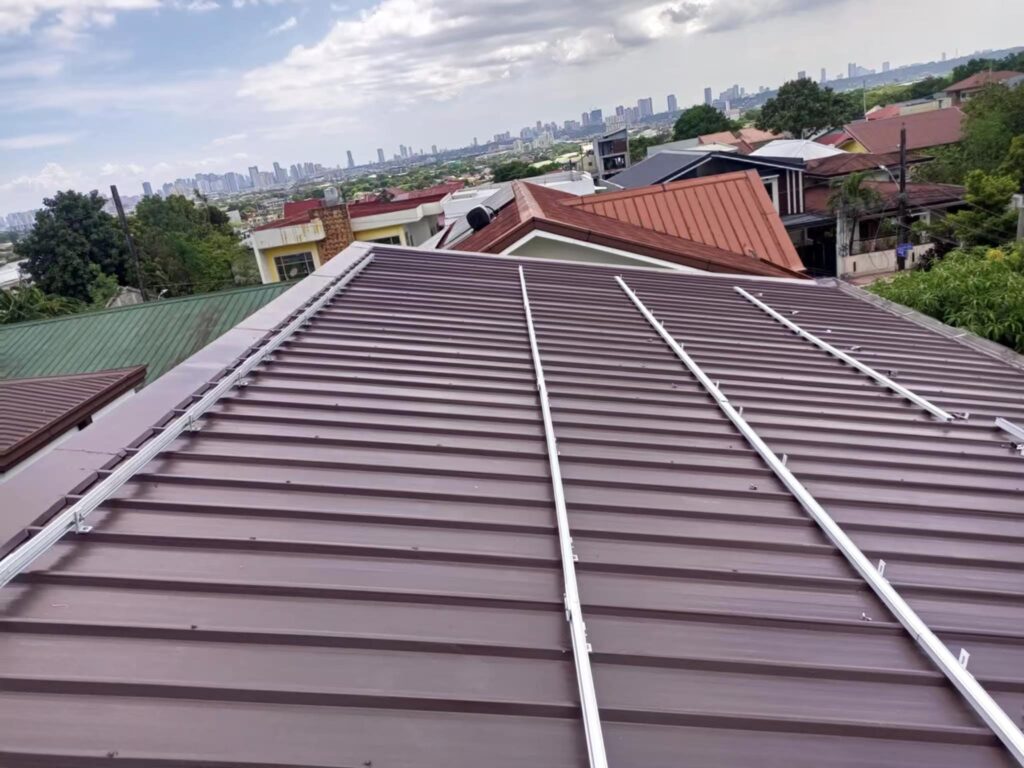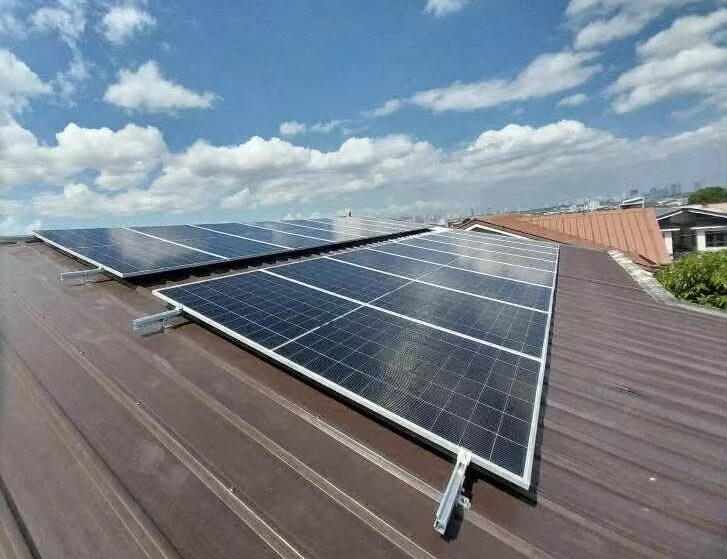If you’ve decided to embrace solar energy and reduce your reliance on the grid, congratulations! Installing your solar panels yourself can be a rewarding project that saves you money and gives you a deeper understanding of your solar power system. This comprehensive DIY guide will walk you through how to mount solar panels using solar brackets, focusing on rigid rooftop solar panels, with detailed steps, materials, and tips to ensure a safe and efficient installation.
This guide references the EcoFlow 400W rigid solar panel and its tilt mount bracket as an example, and integrates professional insights suitable for DIY installers. Additionally, we highlight the advantages of using high-quality mounting materials such as C-channel steel, available from C-Channel Steel, to ensure durability and stability in your solar bracket system.


- Introduction to Solar Panel Mounting
- Required Components for Solar Panel Mounting
- Choosing the Right Materials for Solar Brackets
- Best Locations to Mount Solar Panels
- Tools and Safety Preparations
- Step-by-Step Solar Panel Mounting Guide
- Connecting Multiple Panels
- Maintenance and Troubleshooting
- Cost and Material Comparison Table
- Why Choose C-Channel Steel for Your Solar Brackets
- Final Thoughts
1. Introduction to Solar Panel Mounting
Solar panel mounting is a critical step in setting up your solar power system. The mounting system, often referred to as solar brackets, secures your solar panels to your roof or ground, ensuring they remain stable and optimally angled to capture sunlight efficiently. Proper mounting protects your investment by preventing damage from wind, weather, and other environmental factors.
2. Required Components for Solar Panel Mounting
The components needed vary depending on your solar panel model and mounting type. Using the EcoFlow 400W rigid solar panel as an example, the basic components include:
- Fixing Brackets: Four brackets to attach to the panel frame.
- Adjustable Brackets: Two brackets to set the tilt angle.
- Screws and Bolts: For securing brackets and mounts.
- Roof Attachments: Fasteners drilled into the roof for secure anchoring.
- Mounting Rails: Structural rails that support the panels (optional depending on system).
- Module Clamps: Connectors that hold panels to rails or brackets.
Additional tools include:
- Wrench
- Angle ruler or triangle ruler
- Tarp or canvas (to protect panels during installation)
3. Choosing the Right Materials for Solar Brackets
Choosing the right material for your solar brackets affects durability, ease of installation, and longevity. Common materials include:
| Material | Pros | Cons |
|---|---|---|
| Aluminum | Lightweight, corrosion-resistant, easy to drill | Not suitable for welding |
| Angle Iron | Easy to weld, readily available | Prone to rust unless galvanized |
| Stainless Steel | Extremely durable and corrosion-resistant | Heavy, expensive, difficult to work with |
| Wood | Inexpensive, easy to work with | Degrades faster, requires treatment |
| C-Channel Steel | Strong, versatile, cost-effective, easy to fabricate | Requires protective coating to prevent rust |
Among these, C-channel steel offers an excellent balance of strength, cost, and ease of fabrication, making it ideal for solar brackets, especially for rooftop and ground mounts.
4. Best Locations to Mount Solar Panels
Choosing the right location is key to maximizing your solar energy production:
- Residential Roof: Most common; panels should face south (in Northern Hemisphere) and be free from shading.
- RV/Van Roof: Use flexible or rigid panels; consider curved surfaces.
- Pole Mount: Allows angle adjustment; suitable for limited space or single-panel setups.
- Ground Mount: Ideal if roof space is limited or shaded; requires more land area.
- Wall Mount: Good for small panels; must receive direct sunlight.
5. Tools and Safety Preparations
Before starting, gather all tools and ensure safety:
- Safety harness and helmet (for roof work)
- Ladder and scaffolding
- Drill and bits (appropriate for roof material)
- Measuring tape and angle finder
- Sealant and flashing for waterproofing roof penetrations
- Obtain necessary permits and check local building codes
6. Step-by-Step Solar Panel Mounting Guide
Using the EcoFlow Tilt Mount Bracket as an example, here’s how to mount your solar panels:


Step 1: Plan and Prepare
- Review your roof or mounting site for structural integrity.
- Obtain permits and check local regulations.
- Clear the area and protect your panels by laying them on a tarp.
Step 2: Attach Fixing Brackets to Solar Panel
- Place the panel face down on a tarp.
- Align fixing brackets with the mounting holes on the panel frame.
- Secure brackets using screws without overtightening.
Step 3: Connect Fixing Brackets to Mounting Holes
- Attach the fixing brackets firmly to the panel’s mounting holes on both sides.
- Ensure symmetrical alignment and level mounting holes.
Step 4: Attach Other Legs of Fixing Brackets
- Connect the other leg of each fixing bracket to form the base.
- Tighten screws by hand to allow tilt angle adjustment.
Step 5: Attach Adjustable Brackets
- Connect adjustable brackets to fixing brackets on both sides.
- Set the tilt angle to at least 10 degrees to minimize dust accumulation and optimize sunlight capture.
- Adjust angle based on your latitude and seasonal sun position.
Step 6: Secure the Mounting System to Roof or Ground
- For rooftop: Drill roof attachments and use flashing to prevent leaks.
- For ground mount: Secure the brackets to concrete footings or ground screws.
Step 7: Connect Multiple Panels (Optional)
- Maintain at least 20mm (¾ inch) gap between panels for airflow.
- Panels can be connected in series or parallel depending on system design.
7. Connecting Multiple Panels
When installing multiple panels, consider:
- Electrical configuration (series vs. parallel) affects voltage and current.
- Maintain proper spacing for ventilation and maintenance access.
- Use appropriate wiring and connectors rated for outdoor use.
8. Maintenance and Troubleshooting
- Regularly inspect mounts for loose bolts or corrosion.
- Clean panels periodically to maintain efficiency.
- Check for any roof damage or water leaks near mounting points.
- Adjust tilt angle seasonally if possible for optimal energy production.
9. Cost and Material Comparison Table
| Material | Durability | Cost | Ease of Installation | Corrosion Resistance | Best Use Case |
|---|---|---|---|---|---|
| Aluminum | Medium | Medium | Easy | High | Residential roof mounts |
| Angle Iron | Medium | Low | Medium | Low (unless galvanized) | Budget installations |
| Stainless Steel | Very High | High | Difficult | Very High | Harsh environments |
| Wood | Low | Low | Easy | Low | Temporary or DIY frames |
| C-Channel Steel | High | Medium | Medium | Medium (with coating) | Durable rooftop & ground mounts |
10. Why Choose C-Channel Steel for Your Solar Brackets
At C-Channel Steel, we provide premium, durable, and cost-effective C-channel steel solar brackets tailored for modern solar installations. Benefits include:
- Robust structural strength for long-term stability
- Compatibility with various roof types and ground mounts
- Easy customization and fabrication for specific project needs
- Protective coatings to resist corrosion and weathering
- Competitive pricing without sacrificing quality
Using C-channel steel brackets ensures your solar panels are securely mounted, maximizing performance and lifespan.


11. Final Thoughts
Mounting solar panels yourself is achievable with proper planning, tools, and materials. Using high-quality solar brackets like those made from C-channel steel will ensure your system is safe, efficient, and durable. Always follow manufacturer instructions and local regulations to protect your investment and warranty.
If you prefer professional support, many installers are available to assist with complex installations. However, for DIY enthusiasts, this guide offers a clear roadmap to successfully mount your solar panels and start enjoying clean, renewable energy.
If you want to explore high-quality C-channel steel solar brackets or need custom solutions, visit C-Channel Steel to learn more.
This article is based on the latest solar mounting practices and the EcoFlow DIY guide for mounting rigid solar panels.